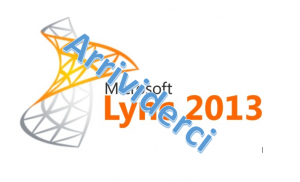But first of, here is the list of fixes, with links to the relevant articles.
And YAY – the CLS bug introduced in the Aug patch is finally fixed – thank you for that.
Update for Standard or Enterprise Edition server (Front End Servers and Edge Servers)
October 2014 Cumulative Update 5.0.8308.831 for Lync Server 2013 core components
Get-CsPoolUpgradeReadinessState
It is important that it returns “Ready” – If it returns “busy” then wait 10 minutes and retry. If you see Busy for at least three consecutive times after you wait 10 minutes in between each attempt, or if you see any result of InsufficientActiveFrontEnds for the State value of the pool, there is an issue with the pool.
Stop new connections to the front end server(s) by using the Stop-CsWindowsServices -Graceful cmdlet.
Run the Cumulative Server Update Installer by using the UI or by using a command to upgrade the front end server(s) associated with an upgrade domain.
NOTE: If you upgrade or update front end servers during scheduled server downtime, you can run the cmdlet in step 2 without the -Graceful parameter. More specifically, run the cmdlet as Stop-CsWindowsService. This action immediately shuts down services, and the server does not wait until each existing service request is fulfilled.
To download the ”lyncserverupdateinstaller.exe” goto
http://www.microsoft.com/en-us/download/confirmation.aspx?id=36820Now continue with the next server.
Lync Server 2013 Standard edition do as follows:
To download the ”lyncserverupdateinstaller.exe” goto
http://www.microsoft.com/enus/download/confirmation.aspx?id=36820The GUI clearly indicates which versions are currently installed for the installed components and which versions will be installed when selecting “Install updates”
Backend Database update.
After you install the update for the Core Components server role on a Lync Server 2013 Enterprise Edition front end server or on a Lync Server 2013 Standard Edition server, the updated SQL database files are dropped to the computer that has the Core Components server role installed. To apply the database changes, you have to run the applicable cmdlets run the applicable cmdlets that are described in step 2.
Note The -Update parameter is not required when you run the Install-CsDatabase cmdlet to update the Lync Server 2013 databases.
Lync Server 2013 Standard Edition
Install-CsDatabase -ConfiguredDatabases -SqlServerFqdn SE.FQDN -Verbose
Note You must run the cmdlet on the Lync Server 2013 Standard Edition server.
Lync Server 2013 Enterprise Edition
You must perform several configuration operations, depending on the kind of Lync Server 2013 Enterprise Edition back end servers that you are using.
Note If Persistent Chat is collocated (Persistent Chat front end service and back end database are running on the same server), you must run the following command together with the ExcludeCollocatedStoresparameter.
Note If database mirroring is enabled for your back end databases, we strongly recommended that you use the Invoke-CsDatabaseFailover -NewPrincipal Primary cmdlet and verify that the primary server is principal for all databases before you run the Install-CsDatabase cmdlet.
Install-CsDatabase -ConfiguredDatabases -SqlServerFqdn FEBE.FQDN -Verbose
Note If Persistent Chat is collocated (Persistent Chat front end service and back end database are running on the same server), you must run the following command together with the ExcludeCollocatedStoresparameter.
Note If database mirroring is enabled for your back end databases, we strongly recommended that you use the Invoke-CsDatabaseFailover -NewPrincipal Primary cmdlet and verify that the primary server is principal for all databases before you run the Install-CsDatabase cmdlet.
Install-CsDatabase -ConfiguredDatabases -SqlServerFqdn FEBE.FQDN -Verbose
Lync Server 2013 Persistent Chat Databases
When Persistent Chat Services are collocated with the SQL BE Databases, run the following command:
Install-CsDatabase -DatabaseType PersistentChat -SqlServerFqdn PChatBE.fqdn -SqlInstanceName DBInstance -Verbose
Lync Server 2013 Monitoring/Archiving/Persistent Chat Databases
When Lync Server 2013 Monitoring/Archiving/Persistent Chat databases are deployed on stand-alone SQL databases, run the following command:
Install-CsDatabase -ConfiguredDatabases -SqlServerFqdn SQLServer.FQDN -Verbose
Step 3: Apply the Central Management Database update
Note You do not have to update the Central Management Database in the following instances:
If the Central Management Store is homed on a Lync Server 2010 Standard Edition Server or Enterprise pool, do not run the Install-CsDatabase -CentralManagementDatabase cmdlets.
If the Central Management Store is homed on a Lync Server 2013 Standard Edition Server or Enterprise pool that was previously updated with the Lync Server 2013 February 2013 cumulative updates.
After the Lync Server 2013 Enterprise Edition front end server or the Lync Server 2013 Standard Edition Server backends are updated, run the following cmdlet to update the Central Management Store:
Install-CsDatabase -CentralManagementDatabase -SqlServerFqdn CMS.FQDN -SqlInstanceName RTC -Verbose
Note In a coexistence environment that contains both Lync Server 2010 and Lync Server 2013 in which the Central Management Service is located on a Lync Server 2010 pool, do not run the Install-CsDatabase -CentralManagementDatabase cmdlet. If you later move the Central Management Service to a Lync Server 2013 pool, you have to run the Install-CsDatabase -CentralManagementDatabase cmdlet to apply the changes.
Step 4: Enable the Mobility service
To enable the Mobility service, run the following cmdlet:
Enable-CsTopology
Step 5: Enable the Unified Communications Web API
To enable the Unified Communications Web API (UCWA), you must run the Bootstrapper.exe tool again on all Lync Server 2013 Director servers, Standard Edition servers, and Enterprise Edition front end servers on which the web components are installed and updated. The command to run the tool is as follows:
%ProgramFiles%Microsoft Lync Server 2013DeploymentBootstrapper.exe
Congratulations – you are now done patching you’re LYNC environment to the latest level.




